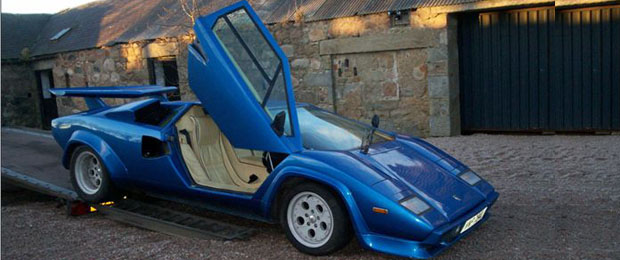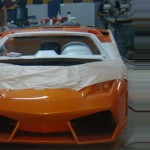 If you watch any of the movie channels, available on any cable system in any country, you’re likely to run across at least one showing of “Smokey and the Bandit II.” This is the version where a couple of young women run a Lamborghini Countach in a wild version of the real “Cannonball Run” (They really did happen in the 1970s as people ran everything from 1938 Dodge delivery trucks – whose brakes failed on a long downhill run on the eastern slopes of the Rockies – that, I was told by one of the participants in the hollering – was a trip he never did forget) and use their “charms” to get out of tickets, until they meet a six-foot woman state trooper who didn’t quite see it their way.
If you watch any of the movie channels, available on any cable system in any country, you’re likely to run across at least one showing of “Smokey and the Bandit II.” This is the version where a couple of young women run a Lamborghini Countach in a wild version of the real “Cannonball Run” (They really did happen in the 1970s as people ran everything from 1938 Dodge delivery trucks – whose brakes failed on a long downhill run on the eastern slopes of the Rockies – that, I was told by one of the participants in the hollering – was a trip he never did forget) and use their “charms” to get out of tickets, until they meet a six-foot woman state trooper who didn’t quite see it their way.
The Lambo they were running was, of course, a real machine, provided by the manufacturer. The Countach, designed by a very young Marcello Gandini in 1970 (a lot of us were younger then) set the style for much of the 1970s and 80s and popularized the wedge-shaped vehicle as the Lamborghini Countach, made from 1974 to 1990, was the prototypical wedge-car.
Why was the wedge so important and popular? Actually, there were two reasons:
- The wedge was a wind-cheater at it sliced through the air like an arrowhead
- The design was unique, as was the car and its very special “scissors” doors, not “gullwings” like the Mercedes, but doors that opened vertically.
The Countach proved so popular with the performance world that demand for them far outstretched supply. Some counts say that as many as 6,000 were produced while others put the figure at a far more conservative 2,000. There are no good numbers as to the numbers of originals that were actually produced.
What it did spawn, though, was an active kit/replicar aftermarket based on any vehicle with a mid-engined chassis. The replica/kit needed to have a mid-engined chassis as its basis because the original was a midengined model.
Lamborghini Countach Replica by Ken Imhoff, KIEngineering
Indeed, there were actually at least three versions of the Countach produced during its model run, the LP400, LP500 and LP600. The LP500 was the standard Countach and it featured a V12 engine that, surprisingly, only turned out 385 horsepower at 8,000 rpm (the engine did love to rev and it had that throaty note that everyone loves in performance cars) and only 365 pounds feet of torque at 5,500 rpm. It used a standard six-speed H-pattern shift.
The surprise from the Countach was that the V-12 only turned out 385 horsepower at 8,000 rpm and the torque figure seemed a bit low for the engine size as well. Perhaps it was because the engine used six deuces (two-barreled carburetors), one per bank of cylinders, that the engine didn’t live up to its real potential.
That aside, you will find that if you dive into the world of kit cars that there were some firms that actually built their version of the Lambo from the ground up. Stohrm of Germany, for example, built a Countach replica that was based on their own work and they built them in very low volume.
Most kit car suppliers, such as Ladret of Alberta, Canada, provided you the parts, but you had to supply the chassis and that chassis was either the Pontiac Fiero or the Toyota MR2.
Pontiac produced 364,000 Fieros during the five-year run of that particular mid-engined vehicle, while Toyota produced about 200,000 MR2s, also mid-engined vehicles, in the same period.
It took an average of about 200 hours or so of work to get the base vehicle put together (the figure could be much more or much less, depending on your level of skill with tools and knowledge of cars). Indeed, some kits may require you to job out parts such as the installation of the engine and transmission, if you don’t know how to do this work and, even if you do, you may still want to job it because all it takes is a small mis-step and your project can be sidetracked for months as you try to run down exactly where the initial problem began.
Which is better to pick up, a kit car or a replica? If you are not handy, then if you can find a car that has already been built and debugged on Ebay or Amazon or on one of the club (there are many clubs devoted to even the kit car marques) and pay for it. It will likely cost you anywhere up to $85,000, or, if you are handy and have been able to build one yourself, you can probably keep your costs down to under $50,000.
















































Leave a Reply
You must be logged in to post a comment.